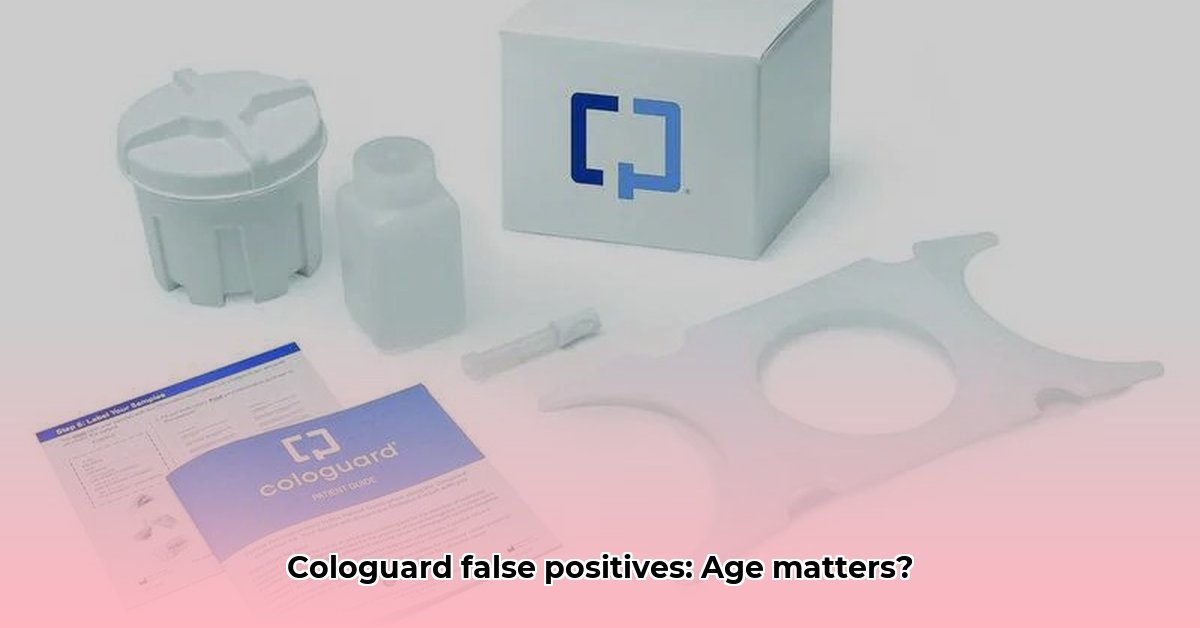Worried about a false positive Cologuard result, especially as you age? This article provides a comprehensive guide to Cologuard false positives, including how age and other factors may affect your results, and what to do if you receive a positive result. We’ll also compare Cologuard to other colon cancer screening options.
Understanding False Positives
What is a Cologuard False Positive?
A false positive occurs when a test indicates a condition is present when it’s actually not. With Cologuard, a false positive suggests you might have colon cancer when, in reality, you don’t. While unsettling, false positives are a possibility with many medical tests.
How Cologuard Works
Cologuard is a non-invasive stool test that analyzes DNA and detects hidden blood. These can be indicators of colon cancer, but can also arise from other, benign sources.
False Positives and Age
The overall false positive rate for Cologuard is estimated around 13%, meaning about 13 out of 100 people tested will receive a positive result even without colon cancer. Current research suggests this rate may increase with age, though precise age-stratified data is limited. This limitation stems from the complexity of isolating age as a sole factor and the ongoing nature of research in this area.
As we age, our bodies, including our DNA, undergo changes. One such change, DNA methylation, can sometimes affect how Cologuard interprets DNA, potentially increasing the chance of a false positive in older individuals.
It is important to note that ongoing research continues to investigate this relationship, and future findings may offer more clarity on age-specific false positive rates.
Other Factors Influencing False Positives
Age is not the only factor that can contribute to a false positive Cologuard result. Other potential influences include:
- Medications: Certain medications can interfere with the test.
- Medical Conditions: Some conditions, such as bleeding hemorrhoids or diverticulitis (inflammation in the digestive tract), can mimic the signals Cologuard looks for.
- Diet: While less impactful, diet may play a minor role in test results. For example, some experts believe that diets high in red meat could potentially influence certain markers in the stool sample.
What to Do After a Positive Result
A positive Cologuard result is not a diagnosis of colon cancer. It necessitates further investigation. Here’s what to do:
- Contact Your Doctor: Schedule an appointment to discuss the results.
- Follow-up Testing: Your doctor will likely recommend a colonoscopy. A colonoscopy allows direct visualization of the colon and is considered the gold standard for colon cancer detection.
Comparing Cologuard to Other Screening Methods
Cologuard offers the convenience of a non-invasive at-home test. However, it has a higher false positive rate compared to other screening methods:
| Screening Test | False Positive Rate | Invasiveness |
|---|---|---|
| Cologuard | ~13% | Non-invasive |
| Fecal Immunochemical Test (FIT) | Lower than Cologuard | Non-invasive |
| Colonoscopy | Very low | Invasive |
These figures are estimates and can vary. Consult your physician for personalized medical advice.
More information on colon cancer screening methods is available from the American Cancer Society.
Conclusion
Understanding the possibility of a false positive and knowing the next steps empowers you to approach Cologuard testing with confidence. Early detection is crucial in the fight against colon cancer, and open communication with your doctor is essential. Discussing your individual risk factors and preferences with your healthcare provider will help determine the most appropriate screening strategy for you. Remember, medical knowledge is constantly evolving. Ongoing research may lead to a more precise understanding of false positives and improved screening methods in the future.
- Your Perfect Bento Box Bag For Fresh And Tidy Meals - December 2, 2025
- Korean Meal Prep Made Easy For Delicious Weekday Meals - December 1, 2025
- Korean Food Meal Prep Makes Flavorful Weekday Meals Simple - November 30, 2025










